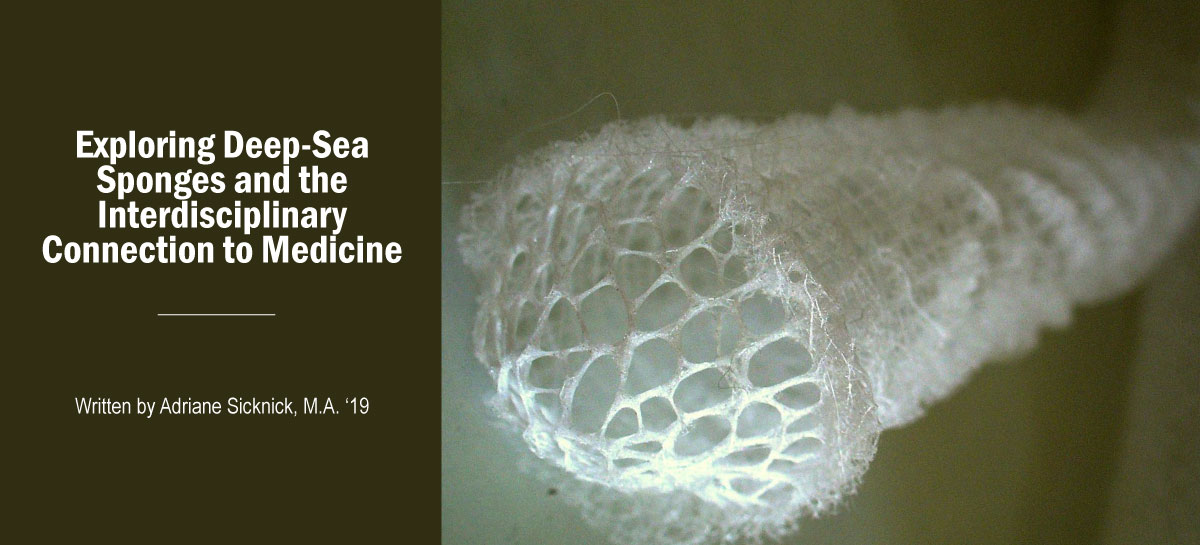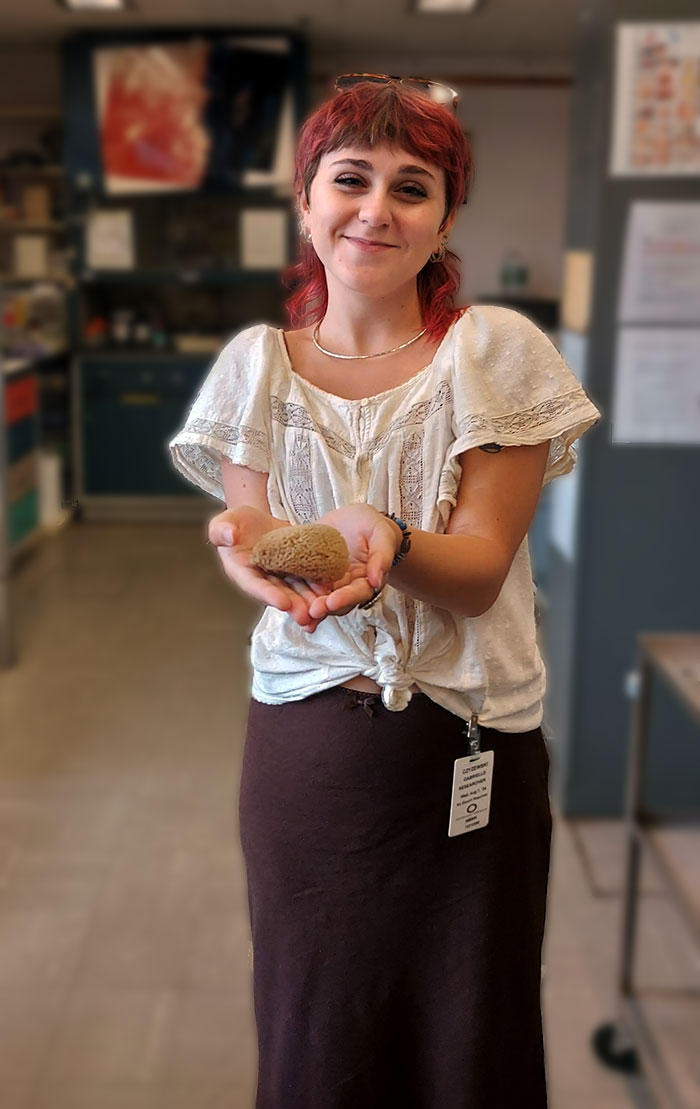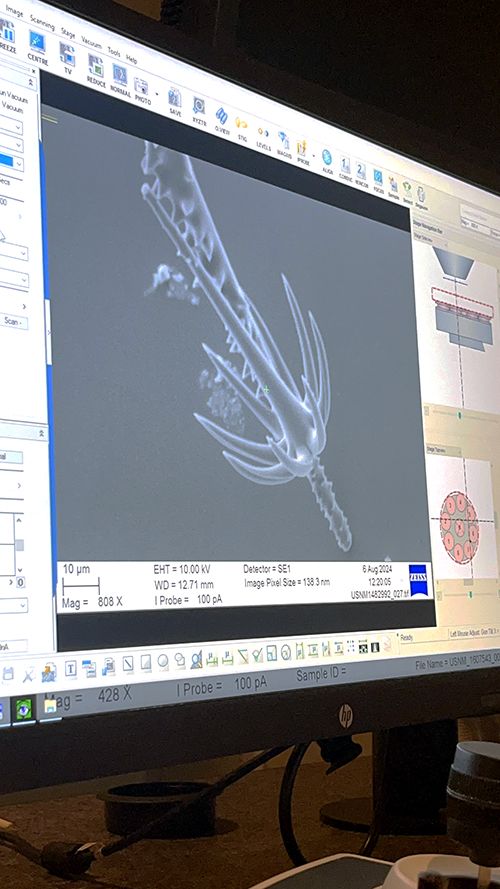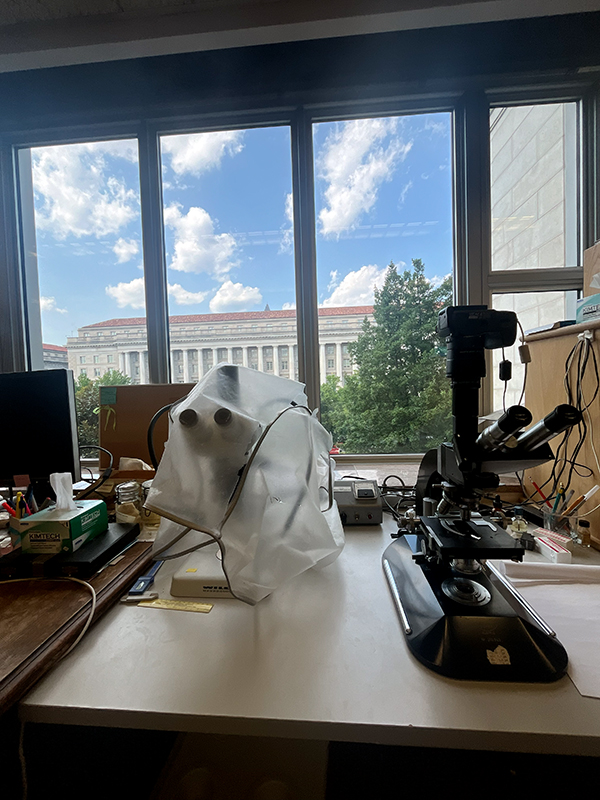Fall 2024 Issue

Photo Credit: Wikicommons
Some of the most exciting discoveries come from the most unexpected places. For marine science major Gabrielle Czyzewski ‘26, sponges became the focus of an exciting research journey that started as a first-year student and led to working at the prestigious Smithsonian Institution under the direction of Brazilian scientist Dr. Cristiana Castello-Branco.

Photo credit: Gabrielle Czyzewski ‘26

Photo credit: Gabrielle Czyzewski.
It all began in her first year at Stockton in 2022, where her curiosity was sparked by attending a talk on deep-sea sponges which set the stage for her involvement in research. "I immediately reached out to my professor, Dr. Christine Thompson, associate professor of Marine Science," she said. After attending a talk on campus by a sponge scientist, a series of connections led her to Assistant Professor of Marine Science Dr. Camilla Alves-Souto who conducts research on sponges. This initial encounter opened the door to an immersive and hands-on exploration of sponges with the potential in cancer research and species discovery.
Czyzewski’s journey was anything but ordinary. Alves-Souto connected her with former colleague and friend Dr. Cristiana Castello-Branco at the Smithsonian in Washington, D.C. She worked with Castello-Branco on identifying sponge species, not just for their ecological significance but for their possible medicinal uses. “We have six samples from the Indo-Pacific being looked at for medicinal purposes, potentially in cancer research,” she explained. This involves a meticulous process of determining whether they are new species and regardless, publishing research about each sponge’s unique properties.
The path from sponge identification at Stockton to advanced research tools and processes in Washington, D.C., was filled with interesting milestones. Though the main project took a pause, their work involved identifying the sponges through intricate methods and preparing them for future studies. One of the core responsibilities was learning the techniques essential to sponge research—especially identifying species and understanding their structural characteristics. Czyzewski gained critical skills, such as mastering the techniques for preparing sponge samples for microscopic analysis.
"We had to make skeleton sections of the sponges and put them on slides," she recalled, a task essential to identifying their structures. “You take a piece of sponge and put it into a wax or paraffin… you make really thin slices from it and put them under a microscope to look at the branching pattern.”

Photo credit: Gabrielle Czyzewski
Through her independent study with Alves-Souto and her connection with Castello-Branco at the Smithsonian, Czyzewski was able to work under the guidance of Castello-Branco for a week in Washington, D.C. One of the major opportunities at the Smithsonian was the opportunity to use equipment that most undergraduates only dream about. "Dr. Alves-Souto was really excited for me to use the Scanning Electron Microscope (SEM)," she said, explaining that this powerful tool allowed her to see spicules, tiny structures that give sponges their shape and defense mechanisms, in incredible detail. “The scanning electron microscope gives a 3D image, something you can’t really get with a standard microscope,” Czyzewski added. Such advanced tools are typically out of reach for undergraduates, making her experience both rare and valuable. Her involvement in this research taught her not just about sponges but also about the interconnectedness of scientific fields.This crossover between marine science and medicine demonstrates the unexpected ways science can combine seemingly unrelated disciplines.
[In my education] I don’t deal with medicine or health care,” she explained, “but having a tie to that is super important because it brings two completely different fields together.”
In reflecting on her time at the Smithsonian and her research journey, Czyzewski expressed gratitude for the opportunities she’s had so early in her academic career. “This one's huge in my mind,” she excitedly recalled about the chance to work on such impactful research. The technical skills, research experience, and confidence gained from this project are sure to be assets as she continues her studies.
Advice to Students
Get in Touch Early. “I’m so glad that I did. That is the advice that I got from someone I know who is
a resident scientist. She was so involved in a lot of different things while getting
her undergraduate degree. She helped me a lot, and that is why I feel like I am where
I am now.”
Have an Open Mind. “The biggest thing is definitely go into it with an open mind… When I started Stockton, I didn’t have any crazy interests – I had multiple interests – but it wasn’t anything specific. I was open to anything, and I think that is the beauty of school in general. It is to show you so many different opportunities and areas that you can focus on.”



